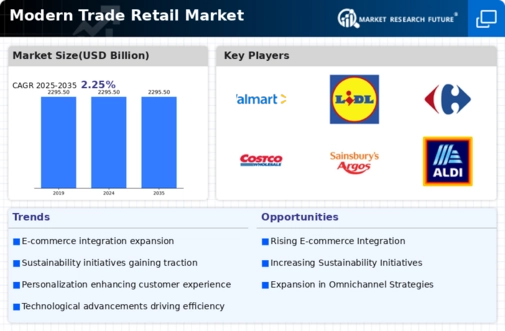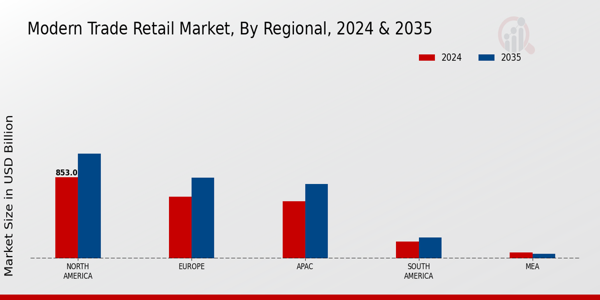The Modern Trade Retail Market is characterized by a rapidly evolving landscape driven by changing consumer preferences, technological advancements, and competitive strategies among key players. Modern trade channels, including supermarkets, hypermarkets, and online platforms, have profoundly transformed retail operations, enabling consumers to enjoy a more convenient and varied shopping experience.
The competitive dynamics in this market see a blend of both local and global retailers vying for market share, each striving to create a unique value proposition that appeals to diverse consumer segments. Retailers are continuously innovating in terms of product offerings, pricing strategies, and enhanced shopping experiences, resulting in a highly dynamic environment where customer satisfaction and loyalty play critical roles in determining success.
Walmart stands out prominently in the Modern Trade Retail Market, leveraging its extensive supply chain management and vast geographic footprint to achieve significant competitive advantages. The company's strengths lie in its ability to offer a comprehensive range of products at competitive prices, which appeals to budget-conscious consumers.
Walmart's investment in technology enhances operational efficiency, enabling it to streamline inventory management and improve customer service. Furthermore, the company has adeptly blended physical and digital shopping experiences, emphasizing its online offerings through a robust e-commerce platform.
This omnichannel approach helps Walmart cater to a wider audience and adapt swiftly to shifting consumer trends. Its commitment to sustainability and community engagement further positions Walmart as a leader in modern trade, fostering consumer trust and loyalty.
On the other hand, Lidl has carved a niche for itself within the Modern Trade Retail Market through its unique business model and customer-centric approach. Lidl focuses on providing high-quality products at attractive prices, appealing to value-driven consumers seeking both affordability and quality.
The retailer's strong presence in the discount grocery segment allows it to compete effectively with larger chains, utilizing a streamlined store format that emphasizes efficiency and cost savings. Lidl's rapid expansion into new markets demonstrates its adaptability and commitment to growth, often marked by the introduction of exclusive private-label products that resonate well with shoppers.
The company's emphasis on local sourcing and sustainability initiatives further enhances its reputation, building a loyal customer base that appreciates both the quality of products and the ethical considerations behind them.














